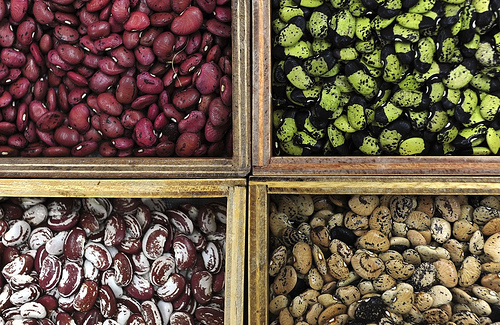
Beans Will Help You Overcome Diabetes
Beans are an excellent source of proteins. They are especially recommended for people who do not eat foods of animal origin. Beans are rich in vitamins and minerals (such as potassium, magnesium, iron, zinc, vitamin B complex, vitamin C and carotene). All of these substances have favorable effect on organism of people with diabetes. Beans contain a large amount of fibers, particularly crude fibers (such as cellulose). Crude fibers accelerate the passage of food through the digestive tract. Also, cellulose acts preventive against the occurrence of constipation. In addition, crude fibers slow down absorption of glucose from the intestine and prevent sudden increase in blood glucose level after meals. Soluble fibers have beneficial effects on lowering LDL cholesterol.
- Important notification about information and brand names used in this slideshow!
- beans-will-help-you-overcome-diabetes.jpg
- beaninstitute.com/health-benefits/beans-and-diabetes
- Wolever, T. M.,et al.Effect of canning on the blood glucose response to beans in patients with type 2 diabetes. Human Nutrition. Clinical Nutrition, 41, 135-140

Citrus Fruits Are Great For Diabetes Patients
Citrus fruits (such as oranges, lemons and grapefruit) contain high doses of vitamin C. This antioxidant is important for reducing stress in your body. Also, vitamin C acts preventively on development of inflammatory processes. The glycemic index of these foods is low. They contain high levels of fibers (especially cellulose), which contribute to uniform absorption of sugar and optimal level of blood glucose after meals. Substances, such as naringin, increase the sensitivity of insulin receptors in tissues. Finally, citrus fruits are a good source of flavonoids. Flavonoids have anti-diabetic activities, such as increased production of insulin in the body and slower absorption of sugar form digestive tract.
- Important notification about information and brand names used in this slideshow!
- farm6.staticflickr.com/5212/citrus-fruits-are-great-for-diabetes-patients.jpg
- www.naturalhealth365.com/food_news/citrus.html
- http://www.trnres.com/ebook/uploads/tiwari/T_1302158657Tiwari-6.pdf
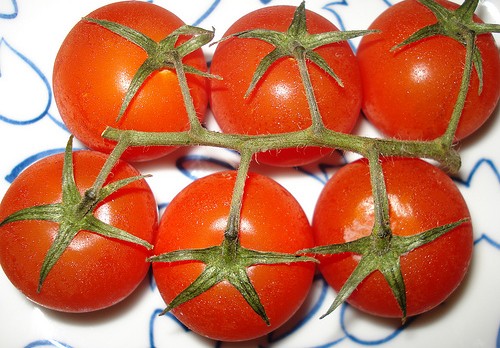
Tomato- The Source Of Vitamins
It is well-known that diabetic patients have an increased risk of blood clots and this phenomenon is the most common cause of heart attack and brain stroke. Scientific studies showed that tomato juice reduces platelet agglutination in people with type 2 diabetes. This characteristic of tomatoes contributes to prevention of heart attack and brain stroke. The use of tomato juice is recommended, but patients must reduce sodium intake. In addition, tomato reduces bad cholesterol and reduces the risk of its deposition in blood vessels. Moreover, tomatoes contain vitamin A, C and K. Tomato is also a good source of sodium, which is important for the maintenance of blood pressure. However, tomato should be eaten unsalted, because increased level of sodium may cause high blood pressure.
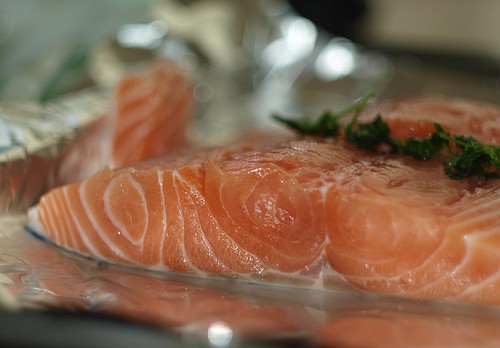
Wild Salmon Is Rich In Omega-3 Fatty Acids
Wild salmon is healthy and beneficial in your diet, because it contains all essential amino acids and omega-3 fatty acids. Omega-3 fatty acids are known as protectors of the blood vessels and they prevent atherosclerosis by reducing bad cholesterol and triglycerides in the blood. Omega-3 fatty acids affect the normalization of blood pressure. Also, they reduce the tendency of blood clotting. It is well-known fact that omega-3 fatty acids help to reduce inflammation. This is important, because inflammation leads to resistance of insulin receptors and impairs the regulation of blood sugar. This fatty acids increase the secretion of hormone leptin. Leptin sends signal to the brain that body is satiated. In this way, wild salmon prevents obesity that may cause resistance of insulin receptors, too.

Nuts Improve Metabolic Control
Studies have shown that the inclusion of nuts contributes to better control of blood sugar levels. Nuts have a low glycemic index. They are the source of healthy fats and contain no cholesterol. Nuts contain arginine and arginine protects small blood vessels from damage (which is frequent complication of diabetes). Nuts represent the source of vitamin E and magnesium, which is also beneficial for the regulation of blood sugar. In addition, nuts are the source of plant sterols. Plant sterols help in reduction of cholesterol absorption from the intestine. In this way, nuts help in fat optimization, sugars and proteins intake. In summary, nuts are very important because they improve metabolic control.

Whole Grains Improve The Control of Blood Sugar Levels
Whole grains should be represented at least 50% to 60% in the diet of diabetic patients with brown rice and millet being the most recommended in the diabetes nutrition. Millet contains a lot of vitamin B which serves as a catalyst (it accelerates the process) in the creation of hormones, such as insulin. Whole grain bread is rich in magnesium which is a substance that is important for optimal insulin activity. In addition, whole grains are rich in fiber materials. Fibers prolong the feeling of satiety and slow down absorption of sugar (provide uniform supplying of sugar). In addition, whole grains are rich in vitamins E, A and K.
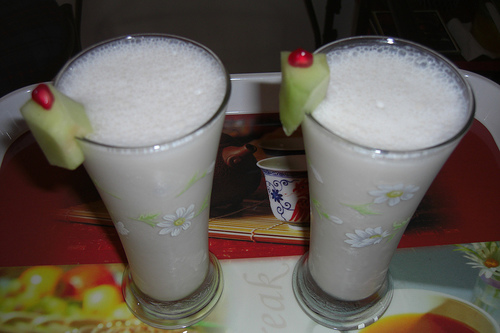
Fat-Free Milk And Yogurt Are Recommended In The Nutrition Of Diabetic Patients
Milk and dairy products (such as yoghurt) are high in fat and milk sugar. Therefore, it is recommended to use fat-free milk and dairy products in the nutrition of diabetic patients. They are rich in calcium and poor in saturated fat and cholesterol. Therefore, fat-free milk and yogurt reduce the risk of obesity, which is associated with poor glycemic control. Skimmed milk and yogurt are sources of high quality proteins. Fat-free yogurt contains 15 grams of carbohydrate and 100 calories per 170 grams. Also, skimmed milk has a high percentage of water content, which is very important in the process of body rehydration.

Berries Are Low Of Carbohydrates
Berries are highly recommended in the diet of people with diabetes because they contain low level of carbohydrates. Berries also contain high levels of fibers, which are beneficial for a healthy digestive tract. Fibers slow down the absorption of glucose from digestive tract. This fact is very important for good diabetes control. Also, berries are low in calories, contain no fat and prevent weight gain. This is important because it is a well known fact that obesity reduces sensitivity of insulin receptors in targeting tissues. Reduced sensitivity of insulin receptors may worsen control of blood glucose levels. They contain natural sugars, but in small quantities. For example, strawberries contain 2 grams of fiber, 28 calories and 4 grams of natural sugar per portion.
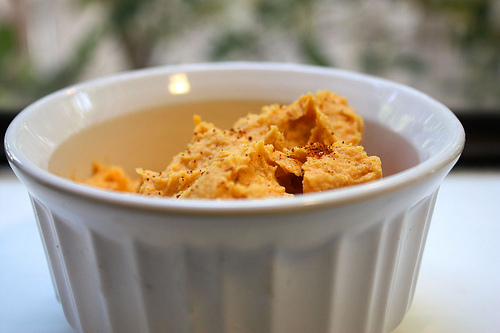
Sweet Potato Improves The Efficiency Of Insulin
One medium-sized sweet potato contains 4 g of dietary fibers, only 100 calories and only 26 grams of carbohydrates. Also, it contains vitamin C and B6. Sweet potato is the source of beta-carotene, an antioxidant which protects your eyes and immune system. So, it helps your body to fight infections. It is well-known fact that infections cause variation of blood sugar levels. In addition, sweet potato is recommended for diabetic patients because it has a low glycemic index. Low glycemic index means that carbs from sweet potatoes are gradually converted into sugar. It gives your body the time to cope with high amounts of sugar after meals. Finally, sweet potato improves the efficiency of insulin in the body.
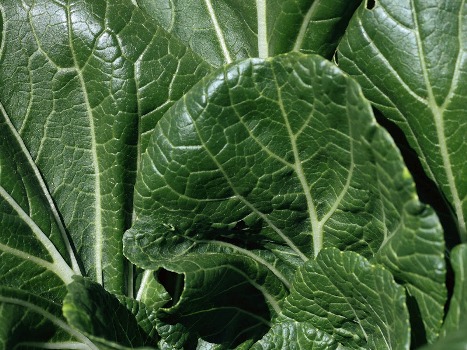
Dark Green Leafy Vegetables Are Low-Calorie Foods
The dark green leafy vegetables (e.g. cabbage, spinach, lettuce, broccoli, collards) are rich in antioxidants, such as vitamins A and C. Also, these vegetables contain folate, iron and calcium. Vitamin E is also found in dark green leafy vegetables. It is well-known that vitamin E optimizes the level of thromboxane and prostacyclin. Thromboxane and prostacyclin are substances that regulate blood coagulability. It was assumed that vitamin E produces glycogen (the storage of sugar). The storage of glycogen prevents hypoglycemia- one of the most common acute diabetes complications. Dark green leafy vegetables are low-calorie foods and contain high levels of fibers. Fibers prevent obesity, slow down sugar absorption from the intestines and improve mobility of intestinal tract.




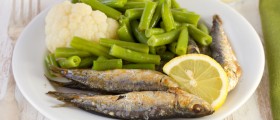




















Your thoughts on this
Loading...